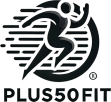Why Strength Training Matters for Runners Over 50
Running is an incredible sport, but as we age, it takes more than just logging miles to stay strong, injury-free, and efficient. Strength training isn’t just an optional add-on—it’s a key pillar for performance, longevity, and overall health. For runners over 50, incorporating resistance training can help maintain muscle mass, support joint health, and improve running economy.
The Benefits of Strength Training for Runners
- Injury Prevention – Strengthening muscles, tendons, and ligaments reduces the risk of common running injuries like knee pain, Achilles issues, and IT band syndrome.
- Improved Running Economy – Stronger legs mean better efficiency, allowing you to run at the same pace with less effort.
- Muscle Preservation – Age-related muscle loss (sarcopenia) is real, but resistance training fights back by keeping muscles engaged and active.
- Stronger Bones & Joints – Weight-bearing exercises increase bone density, which is crucial as we age.
- Better Posture & Core Stability – A strong core and upper body help maintain good running form, especially during long runs.
My Go-To Strength Routine
I keep my strength training simple but effective, focusing on key movements that target running-specific muscles. Here’s what my routine looks like:
✅ Lower Body Focus:
- Goblet Squats – Builds lower-body strength while reinforcing good squat mechanics.
- Leg Presses – Targets quads, hamstrings, and glutes.
- Weighted Calf Raises – Essential for strong ankles and powerful push-offs.
- Single-Leg Deadlifts – Great for balance, stability, and hamstring engagement.
- Weighted Reverse Lunges – Helps with unilateral leg strength, mimicking the motion of running.
✅ Upper Body & Core Focus:
- Bicep Curls & Hammer Curls – Strengthens the arms, helping with running posture.
- Triceps Extensions – Prevents arm fatigue and maintains good form.
- Lat Pulldowns & Cable Rows – Develops back strength, aiding in efficient arm swings.
- Core Work (Planks, Russian Twists, Hanging Leg Raises) – A strong core is the foundation of good running mechanics.
Best Practices (That I’m Still Working On!)
Even with a solid routine, there are some best practices I’m still refining:
- Lift Heavy, Lift Smart – Many strength coaches recommend heavier weights with lower reps for leg exercises to build power without excess fatigue. I have this on my radar.
- Progressive Overload – Gradually increasing weight or reps prevents plateaus and ensures continued strength gains.
- Form Over Ego – Proper form is everything. Sloppy reps lead to injuries, not gains.
- Balancing Strength with Running – Strength training should complement running, not interfere with it. Scheduling heavy leg days away from key runs is a must.
Final Thoughts
Strength training is a game-changer for runners over 50 and beyond. It’s not about bulking up but building resilience, efficiency, and longevity. I’m constantly refining my approach, and as I train for upcoming races like the Georgina Spring Fling Half Marathon, I’ll continue fine-tuning what works best for me.
Don’t skip the weights—your future running self will thank you!
